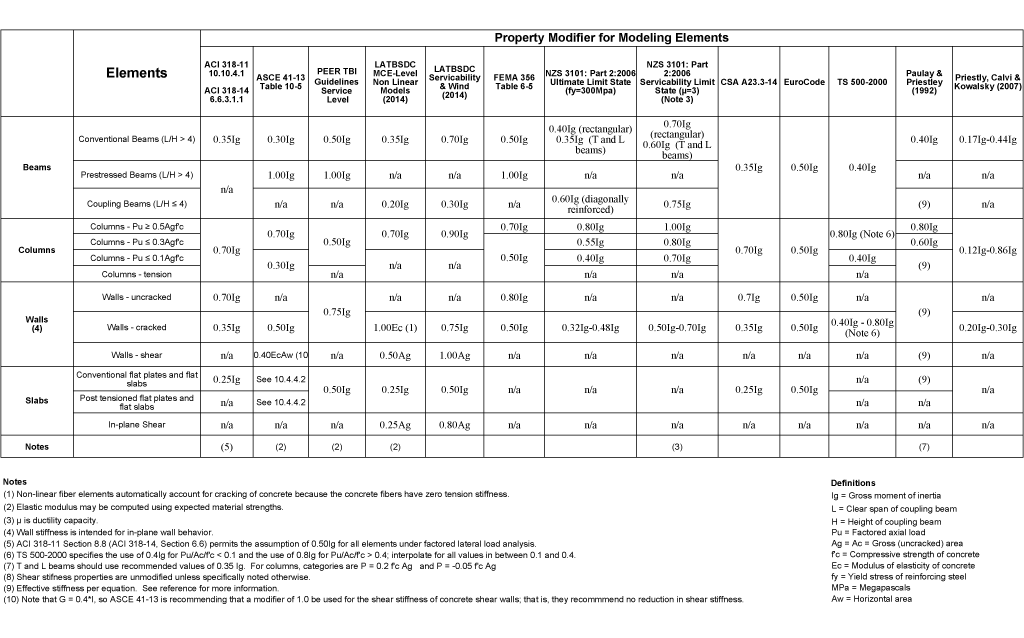Stiffness For Linear Seismic Analysis Of Concrete Walls

Design codes and seismic standards e g fema asce and aci provide factors to reduce stiffness to account for the effects of cracking in the analyses and design.
Stiffness for linear seismic analysis of concrete walls. In chapter 2 having been validated against the experimental results in chapter 3 is used in this. The method accounts for the initial section stiffness ecigprior to cracking and the retention of initial stiffness after cracking due to axial compression from gravity loads closing cracks. However the basis for these stiffness reduction factors or stiffness expressions is not clearly presented in these standards and their applicability to nuclear plant elements could not be assessed nureg cr 6926. Effective flexural stiffness for linear seismic analysis of concrete walls.
Test of high rise core wall. Perry adebar ahmed m. A trilinear bending moment curvature model is used to develop a general method for determining the effective flexural stiffness of concrete walls for use in linear seismic analysis. Chapter to determine a linear flexural stiffness that can be used for the linear seismic analysis.
Subsequent analysis of these buildings demonstrated that their structural walls provided sufficient stiffness to limit the displacement response and seismic damage. Modeling of concrete structural elements using linear analysis to extract a reasonable structural response typically involves modifying the stiffness of concrete structural elements. Ibrahim and michael bryson publication. Effective stiffness for seismic analysis author s.
The appropriate stiffness for the linear analysis is an effective initial stiffness consistent with the bilin ear force deformation assumptions that were used to establish this traditional design approach. Effective stiffness is a function of the applied loading and detailing of the component. However this method presents its challenges including the following. A reduction factor is usually applied to the stiffness to account for the effect of cracking in linear analysis.
5 appears on pages s. The effective stiffness of a wall structure is determined by obtaining the linear. Stiffness is an important parameter for the seismic design of shear walls which is related to the shear force distribution of each wall member. Empirical evidence suggests that the use of a large wall density and thus a large lateral stiffness has contributed to remarkable performance for these buildings following large earthquakes.
A test was conducted on a large scale model of a concrete.











































